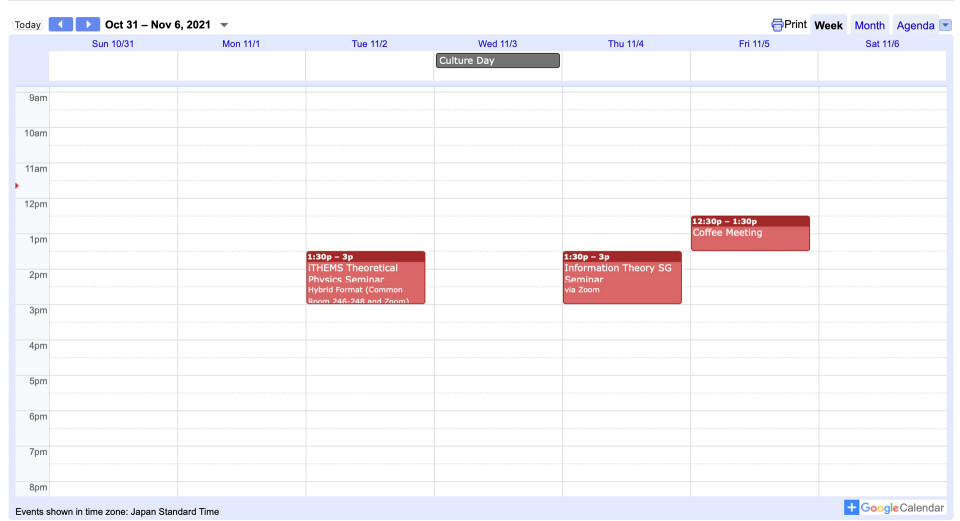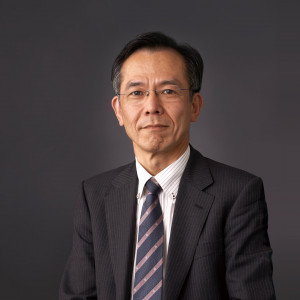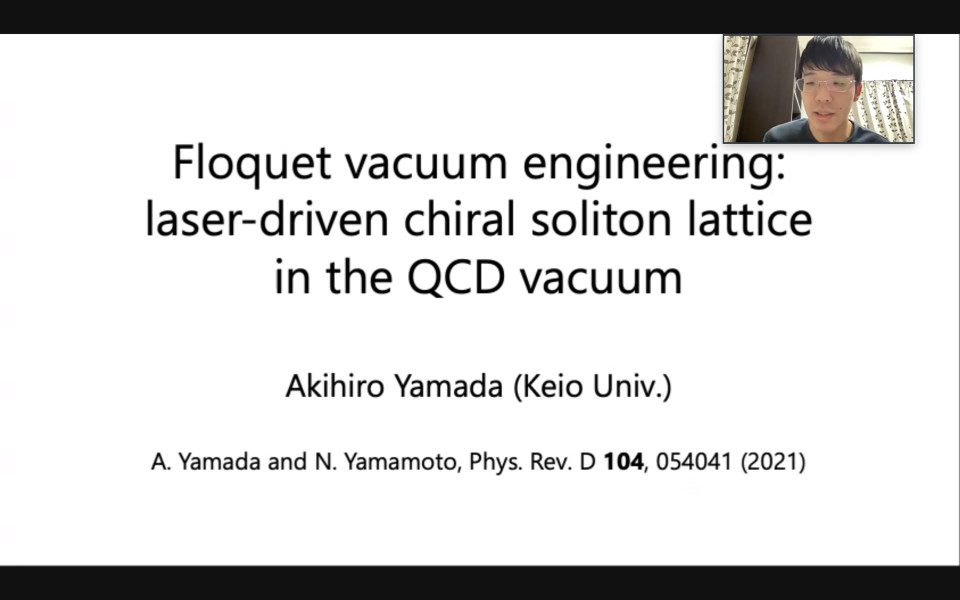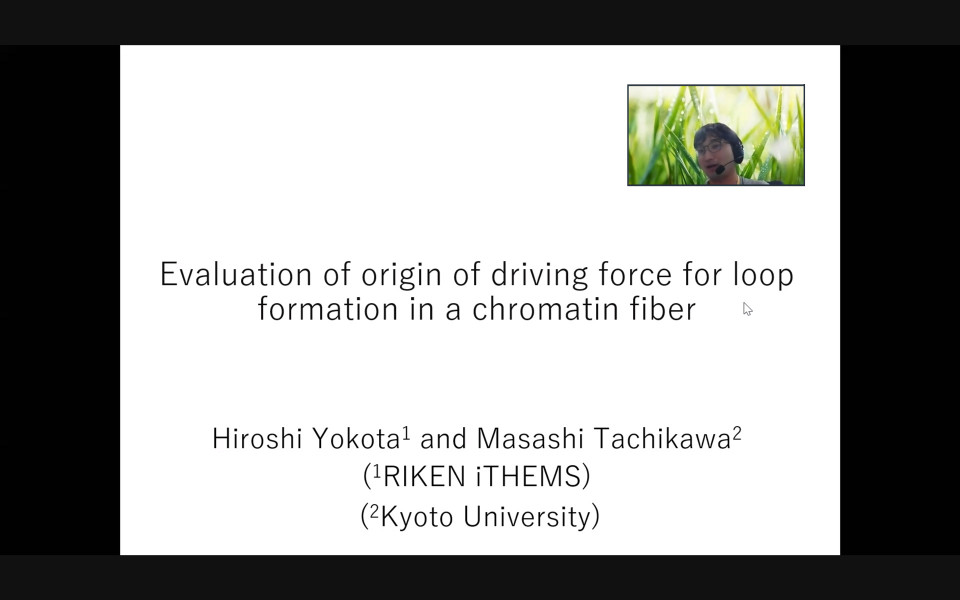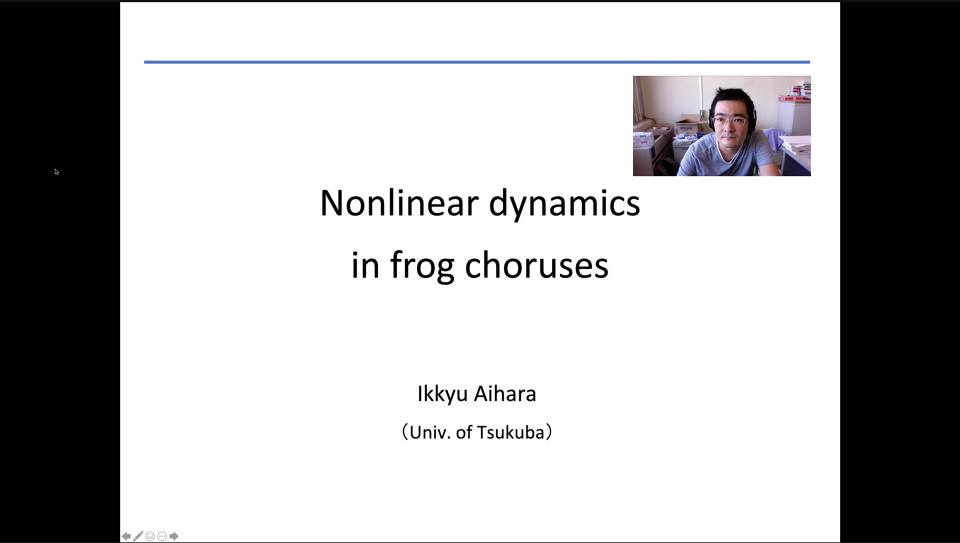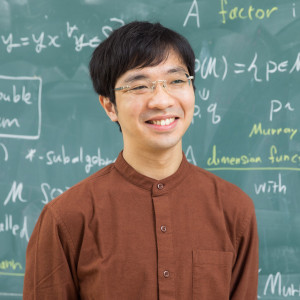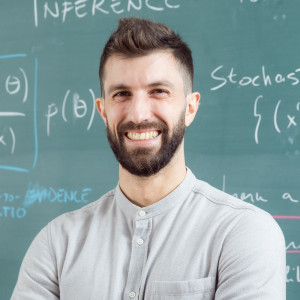Volume 172
Back to Newsletter List
Event Schedule
Events for the 1st week of November 2021
2021-10-28
Tuesday, November 2, 13:30– 15:00 iTHEMS Theoretical Physics Seminar
Thursday, November 4, 13:30– 15:00 Information Theory SG Seminar
Friday, November 5, 12:30- Coffee Meeting
Hot Topic
Prof. Motoko Kotani was elected as the next president of the International Science Council
2021-10-25
Prof. Motoko Kotani (Senior Visiting Scientist, iTHEMS) was elected as the next President-elect of the International Science Council (ISC) at the ISC General Assembly held on October 14, 2012. The term of office is for three years starting in 2024.
To read more, please see the related link (in Japanese).
Hot Topic
Shigefumi Mori will be awarded the Order of Culture
2021-10-28
We are very happy to hear that Shigefumi Mori, Director-General and Distinguished Professor, KUIAS and Senior Advisor of RIKEN iTHEMS, will be awarded the Order of Culture in recognition of his “outstanding achievements in mathematics, especially in algebraic geometry, in creating Mori Theory, a theory of minimal models of algebraic varieties, which has had a significant impact on a wide range of fields in the mathematical sciences, and for his outstanding contributions to the development of this field”. Mori-san’s field of expertise is mathematics, especially algebraic geometry. He was awarded the Fields Prize at the International Congress of Mathematicians in 1990 for his great work on the classification problem of algebraic varieties, a central theme in algebraic geometry, and has continued to vigorously lead research in related areas.
An algebraic variety is, roughly speaking, the set of solutions of algebraic equations. For example, the (real) solution of the equation x2 + y2 = 1 is a unit circle, which is an algebraic variety. The notion of algebraic varieties enables us to transform algebraic problems into geometric problems.
It is an important task in algebraic geometry to study the properties of algebraic varieties. However, it is not efficient to study each algebraic varieties one by one. So, mathematicians identify similar varieties as the same “species”, and try to make a “biological dictionary” of algebraic varieties. Here, we say that two algebraic varieties are “similar” if they map to each other under an operation called birational transformation. Birational transformation is an operation to modify low-dimensional part of an algebraic variety. Since birational transformation preserves main part of algebraic varieties, we can naturally regard two varieties that are transformed to each other by this operation as the same species.
In such a biological species, there are many (non-isomorphic) individual algebraic varieties. Which individual should we choose to show in the dictionary as a “standard example”? In this kind of situation, mathematicians usually want to bring the simplest possible representative example, which algebraic-geometers call “minimal model”.
For example, let’s think of 1-dimensional algebraic varieties, i.e., curves. A curve has singularities in general, but we can birationally transform the curve into a non-singular curve. In fact, inside a “species”, there is only one non-singular curve. So it is obvious that we should choose this non-singular curve as a minimal model. In 2-dimensional case (surface case), we can still make any surface into non-singular surface. However, this time, there are many non-singular surfaces in a species, so not all of them are the simplest as possible. If a surface is not minimal, then we can alway find a special types of curve, called “(-1)-curve” on a surface and contract them into one points to get a smaller surface. By iterating this process, we can obtain a non-singular surface with no (-1)-curves, which is the minimal model.
What happens in higher dimensions? In any dimension, fortunately, we can always transform an algebraic variety into a non-singular one by birational transformation (This is an important result by Heisuke Hironaka, another Fields Medalist). But if the dimension is greater than or equal to 3, in the process of creating smaller algebraic varieties, it is sometimes inevitable to allow some singularities to re-appear. This makes the classification problem much more difficult in higher dimension. However, Mori-san proved that we can always find the minimal model in three dimension if we allow the existence of mild singularities called “terminal singularities”. It is very hard to construct smaller algebraic varieties without causing bad singularities, but Mori-san constructed a theory to overcome this essential difficulty. After Mori-san’s breakthrough, there has been a big development in classification problems in dimensions higher than 3. Moreover, the theory has had (and will have) vast applications in various areas of mathematics.
I have introduced only a small part of the great achievements of Shigefumi Mori. We congratulate Mori-san on his award and on the progress of higher dimensional minimal model program.
iTHEMS wishes him further progress in Mori Theory and in the promotion of mathematical sciences.
Hiroyasu Miyazaki
(on behalf of iTHEMS)
Seminar Report
Quantum Matter SG seminar by Dr. Robert Peters on October 20, 2021
2021-10-27
The Quantum Matter Study Group invited Dr. Robert Peters from Kyoto University to talk about nonlinear responses in strongly correlated systems. In the beginning, the speaker introduced nonlinear responses by reviewing several related experimental data, including a nonlinear photo-induced current. Then, going beyond linear response theory, he explained the approach to compute nonlinear responses in strongly correlated systems. Here, the essential step of his work was to neglect vertex corrections, which enables the analysis of higher-order correlation functions within established frameworks of, e.g., dynamical mean field theory. Equipped with this tool, he showed nonreciprocal conductivity in a ferromagnetic non-centrosymmetric heavy Fermion compound and giant nonlinear Hall effect in a Weyl-Kondo-Semimetal.
Reported by Thore Posske (University of Hamburg, Germany) and Ching-Kai Chiu
Nonlinear response in strongly correlated systems
October 20 (Wed) 17:00 - 18:15, 2021
Seminar Report
DMWG Seminar by Prof. Takashi Toma on October 20, 2021
2021-10-27
Among the varieties of dark matter (DM) candidates, the so-called WIMP (an abbreviation of the weakly interacting massive particle) is famous for its beautiful mechanism to achieve the current DM density. In the early Universe, WIMP was in the thermal bath of the Standard Model (SM) particles. In this stage, (i) DM+DM->SM+SM, (ii)SM+SM->DM+DM interaction as well as (iii)DM+SM-> DM+SM interaction occur frequently enough. The strategy searching for each process corresponds to indirect, collider, and direct detection experiments. The cross-section (i.e., the interaction rate) of the above processes correlates with each other. The dropping off of the interaction rate of the process (i) below to the Hubble expansion rate of the Universe fixes the number density of DM particles. We need only two parameters in this WIMP freeze-out scenario: mass and the interaction cross-section. Nowadays the constraints from direct detection experiments are so severe that WIMP in the low mass range of m However, such constraints could be evaded by considering a different mechanism for fixing the particle number density. If DM interacts as (i)' DM+DM->DM+SM, which is a process referred to as co-annihilation, the cross-section of the process (iii) could be suppressed in a velocity-dependent way. A concrete example introduced in this talk is the one considering the SM particle in the process (i)' as the neutrino. From the momentum conservation, DM accumulated in the Sun annihilates to produce boosted DM and neutrino, hence we expect a double-peak spectrum in large-volume neutrino experiments for this case. The solution to the core-cusp problems of usual WIMP and the origin of the neutrino mass, which is another important problem in the Standard Model, are also within the focus of this story. The world of DM is not closed on its own. It should be a key to understanding nature and obtaining a picture of our Universe! Reported by Nagisa Hiroshima
Distinctive signals of boosted dark matter from semi-annihilations
October 20 (Wed) 10:00 - 11:30, 2021
Seminar Report
NEW WG Seminar by Mr. Akihiro Yamada on October 20, 2021
2021-10-27
Akihiro Yamada (Keio U.) gaive a talk on "Floquet vacuum engineering: laser-driven chiral soliton lattice in the QCD vacuum" based on his recently published paper [1]. After briefly introducing the Floquet theory and the chiral perturbation theory, Akihiro showed emergence of chiral soliton lattice structure in the QCD vacuum under a very strong laser field with large frequency. About 20 people have joined the seminar, and we had fruitful discussions during and after the seminar.
Reported by Hidetoshi Taya
Reference
- A. Yamada, N. Yamamoto, " Floquet vacuum engineering: Laser-driven chiral soliton lattice in the QCD vacuum," Phys. Rev. D 104, 054041 Vol. 104 (2021), doi: 10.1103/PhysRevD.104.054041
Floquet vacuum engineering: laser-driven chiral soliton lattice in the QCD vacuum
October 20 (Wed) 13:30 - 15:00, 2021
Seminar Report
iTHEMS Biology Seminar by Dr. Hiroshi Yokota on October 21, 2021
2021-10-27
In the iTHEMS Biology seminar on October 21, I talked about the driving force and the mechanism of the chromosome formation. The chromosome is constructed by chromatin fiber condensed into the rod-like shape. The rod-like shape comes from the consecutive chromatin loops. The driving force of the chromosome formation is one of the controversial issues. Two hypotheses on the driving force are considered: energy gain from ATP hydrolysis and thermal fluctuation energy. In this talk, I discussed the driving force derived from the free energy of the chromatin loop. Moreover, the mechanism associated with each driving force was also discussed by using the dynamical model based on the free energy. The result implies that these mechanisms dynamically switch. This study is collaborated with Masashi Tachikawa in Kyoto University who is also visiting scientist in iTHEMS. As there were various questions and discussions from the audiences, I was so happy. Thank you very much!
Evaluation of origin of driving force for loop formation in a chromatin fiber
October 21 (Thu) 10:00 - 11:00, 2021
Seminar Report
iTHEMS Biology Seminar by Prof. Ikkyu Aihara on October 28, 2021
2021-10-29
In the Biology Seminar on 28th October, Ikkyu Aihara (University of Tsukuba) gave a talk on frog chorus and its synchronization phenomena using experimental, fieldwork, and mathematical models. An earthquake that had occurred just before the seminar made me a bit nervous about whether we can hold the seminar, but the talk thankfully went very well. As I'm a big fan of Kuramoto-model as well as Ikkyu's work, I really enjoyed the talk on the whole. I saw one of the most interesting experiments of his ongoing work, and so I'm really looking forward to seeing the work being published. I also enjoyed a private conversation between Ikkyu and Kazuyuki Aihara before and during the talk! Thank you again for the great talk, Ikkyu-san!
Reported by Ryosuke Iritani
Nonlinear dynamics in frog choruses
October 28 (Thu) 10:00 - 11:00, 2021
Upcoming Events
Seminar
iTHEMS Theoretical Physics Seminar
Is the Standard Model in the Swampland? Consistency Requirements from Gravitational Scattering
November 2 (Tue) 14:30 - 16:00, 2021
Katsuki Aoki (Research Assistant Professor, Yukawa Institute for Theoretical Physics, Kyoto University)
Underlying assumptions on ultraviolet completion can impose constraints on its low-energy effective field theories (EFTs). The swampland program aims to clarify consistent and inconsistent EFTs with quantum gravity and aims to understand quantum gravity from low-energy physics and vice versa. One of the most well-established constraints is called positivity bounds, provided that general assumptions such as Poincare invariance and unitarity are satisfied at all scales. I will first explain how these consistency conditions arise especially in the presence of gravity. I will then show that the positivity bound is violated if the Standard Model of particle physics coupled to General Relativity is extrapolated up to 10^16 GeV, requiring new physics there or below. The precise value of the cutoff is determined by hadronic physic while it is insensitive from non-gravitational physics beyond the Standard Model. This is a signal from established physics for the necessity of quantum gravity below 10^16 GeV.
Venue: Hybrid Format (Common Room 246-248 and Zoom)
Event Official Language: English
Seminar
Information Theory Seminar
Boolean algebras and operator algebras
November 4 (Thu) 15:00 - 16:30, 2021
Michiya Mori (Special Postdoctoral Researcher, RIKEN Interdisciplinary Theoretical and Mathematical Sciences Program (iTHEMS))
The concept of Boolean algebra was introduced by George Boole in 1847. It plays a fundamental role in the theory of propositional logic. The theory of operator algebras was initiated by John von Neumann in around 1930. A keyword of the latter theory is "noncommutativity".
In this talk, I will first explain basics of Boolean algebras and some ideas in operator algebra theory. Then I will talk about my recent attempt to give a new formulation of the concept of "noncommutative Boolean algebras" in an operator algebraic framework.
Venue: via Zoom
Event Official Language: English
Seminar
iTHEMS Biology Seminar
Toward mathematical medicine: development of a new drug and digital medicine for sleep disorders
November 11 (Thu) 12:30 - 13:30, 2021
Jae Kyoung Kim (Associate Professor, Department of Mathematical Sciences, KAIST, Republic of Korea)
In this talk, I will illustrate collaborative stories between our math group and medical researchers to treat disrupted circadian rhythms and sleep. First, I will illustrate the key molecular mechanism for robust circadian rhythms against spatio-temporal noise, which we identified by analyzing spatio-temporal timeseries data of clock molecules. This explains why Alzheimer's diseases, obesity, and aging cause unstable circadian rhythms and sleep-wake cycle: cytoplasmic traffic jam, which provides a new paradigm to treat sleep disorders. Next, I will talk about our collaboration story with Pfizer Inc: how we used mathematical modeling to help the development of a new drug modulating the circadian phase. Finally, I will introduce our collaboration with Samsung medical center: how we used mathematical modeling to analyze complex sleep patterns of shift workers measured with wearables to find optimal sleep patterns minimizing sleep disorders. This opens the chance for the development of an app providing a personalized sleep schedule for shift workers.
Venue: via Zoom
Event Official Language: English
Seminar
Information Theory Seminar
Simulation-based inference for multi-type cortical circuits
November 29 (Mon) 13:30 - 15:00, 2021
Enrico Rinaldi (Research Fellow, Physics Department, University of Michigan, USA)
In many scientific fields, ranging from astrophysics to particle physics and neuroscience, simulators for dynamical systems generate a massive amount of data. One of the crucial tasks scientists are spending their precious time on is comparing observational data to the aforementioned simulations in order to infer physically relevant parameters and their uncertainties, based on the model embedded in the simulator. This poses a problem because the likelihood function for realistic simulations of complex physical systems is intractable. Simulation-based inference techniques attack this problem using machine learning tools and probabilistic programming. I will start with an overview of the problem and explain the general application of simulation-based inference methods. Then I will describe an application of the methods to a model of neurons in the visual cortex of mice."
References
- Kyle Cranmer, Johann Brehmer, Gilles Louppe, The frontier of simulation-based inference, PNAS 117, 48, 30055-30062 (2020), doi: 10.1073/pnas.1912789117
- Agostina Palmigiano, Francesco Fumarola, Daniel P. Mossing, Nataliya Kraynyukova, Hillel Adesnik, Kenneth D. Miller, Structure and variability of optogenetic responses identify the operating regime of cortex (2021), doi: 10.1101/2020.11.11.378729
Venue: via Zoom
Event Official Language: English
Upcoming Visitors
November 2 (Tue) - 5 (Fri) 2021 Katsuki AokiResearch Assistant Professor, Yukawa Institute for Theoretical Physics, Kyoto University Visiting Place: RIKEN Wako Campus |
Paper of the Week
Week 5, October 2021
2021-10-28
Title: On an Average Goldbach Representation Formula of Fujii
Author: D. A. Goldston, Ade Irma Suriajaya
arXiv: http://arxiv.org/abs/2110.14250v1
Title: Negative string tension of higher-charge Schwinger model via digital quantum simulation
Author: Masazumi Honda, Etsuko Itou, Yuta Kikuchi, Yuya Tanizaki
arXiv: http://arxiv.org/abs/2110.14105v1
Title: A new perspective on cosmology through Supernovae Ia and Gamma Ray Bursts
Author: Biagio De Simone, Via Nielson, Enrico Rinaldi, Maria Giovanna Dainotti
arXiv: http://arxiv.org/abs/2110.11930v1
Title: QCD viscosity by combining the gradient flow and sparse modeling methods
Author: Etsuko Itou, Yuki Nagai
arXiv: http://arxiv.org/abs/2110.13417v1
Title: Optical spin transport theory of spin-1/2 topological Fermi superfluids
Author: Hiroyuki Tajima, Yuta Sekino, Shun Uchino
arXiv: http://arxiv.org/abs/2109.14505v2
Title: Unified Description of Tunneling Transport in Ultracold Atomic Gases
Author: Hiroyuki Tajima, Daigo Oue, Mamoru Matsuo
arXiv: http://arxiv.org/abs/2110.11701v1
If you would like to cancel your subscription or change your email address,
please let us know via our contact form.
Copyright © iTHEMS, RIKEN. All rights reserved.


